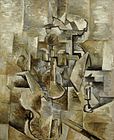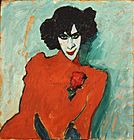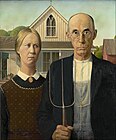Western painting


| History of art |
|---|
The history of Western painting represents a continuous, though disrupted, tradition from
Initially serving imperial, private, civic, and religious patronage, Western painting later found audiences in the
Western painting reached its zenith in Europe during the Renaissance, in conjunction with the refinement of drawing, use of perspective, ambitious architecture, tapestry, stained glass, sculpture, and the period before and after the advent of the printing press.[9] Following the depth of discovery and the complexity of innovations of the Renaissance, the rich heritage of Western painting continued from the Baroque period to Contemporary art.[10]
Pre-history
-
Lascaux, horse
-
Lascaux, Bulls and Horses
-
Petroglyphs, from Sweden, Nordic Bronze Age(painted)
The
Prehistoric European cave paintings share common themes with other prehistoric paintings that have been found throughout the world; implying the universality of purpose and similarity of the impulses that might have inspired the artists to create the imagery.[citation needed] Various conjectures have been made as to the meaning these paintings had to the artists who made them. Prehistoric men may have painted animals to "catch" their soul or spirit in order to hunt them more easily, or the paintings may represent an animistic vision and homage to surrounding nature, or they may be the result of a basic need of expression that is innate to human beings, or they may be recordings of the life experiences of the artists and related stories from the members of their circle.
Greece and Rome
-
Fresco of a Mycenaean woman
-
Mural ofAncient Macedonia, 4th century BC
-
Banquet fresco detail from the tomb of Agios Athanasios, Thessaloniki, Greece, 4th century BC
-
Fresco of anthureosshield, 3rd century BC
-
Roman art, Villa Boscoreale frescos, c. 40 BC
-
Roman art, Pompeii
-
Roman art, Pompeii
-
Banquet scene, fresco, Herculaneum, Italy, c. 50 BC
-
Roman art, Fayum mummy portraits from Roman Egypt, c. 120–130 AD
-
Roman art from the House of the Vettii, Pompeii, 1st century AD
-
Roman fresco with a seated Venus, the so-called "Dea Barberini", 4th century AD
-
Begram, Afghanistan (once part of the Greco-Bactrian Kingdom, then under the Kushan Empire), 52–125 AD[11]
-
, 3rd century AD
Bronze Age Aegean Civilizations
Minoan painting is the art produced by the Bronze Age Aegean Minoan civilization from about 3000 to 1100 BC, though the most extensive and finest survivals come from approximately 2300 to 1400 BC. It forms part of the wider grouping of Aegean art, and in later periods came for a time to have a dominant influence over Cycladic art. Since wood and textiles have decomposed, the best-preserved (and most instructive) surviving examples of Minoan art are its pottery, palace architecture (with frescos which include "the earliest pure landscapes anywhere"),[12] small sculptures in various materials, jewellery, metal vessels, and intricately-carved seals.
It was influenced by the neighbouring cultures of Ancient Egypt and the ancient Near East, which had produced sophisticated urban art for much longer, but the character of the small but wealthy mercantile Minoan cities was very different, with little evidence of large temple-based religion, monarchs, or warfare, and "all the imaginative power and childlike freshness of a very young culture".[13] All these aspects of the Minoan culture remain rather mysterious. Sinclair Hood described an "essential quality of the finest Minoan art, the ability to create an atmosphere of movement and life although following a set of highly formal conventions".[14]
The largest and best collection of Minoan art is in the
The relationship of Minoan art to that of other contemporary cultures and later
Classical Antiquity
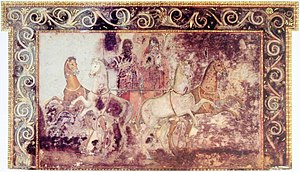
Around 1100 BC, tribes from the north of Greece conquered Greece and its art took a new direction. The culture of
Some famous Greek painters who worked on wood panels and are mentioned in texts are Apelles, Zeuxis and Parrhasius; however, with the single exception of the Pitsa panels, no examples of ancient Greek panel painting survive, only written descriptions by their contemporaries or later Romans. Zeuxis lived in the 5th century BC and was said to be the first to use sfumato. According to Pliny the Elder, the realism of his paintings was such that birds tried to eat the painted grapes. Apelles is described as the greatest painter of antiquity, and is noted for perfect technique in drawing, brilliant color, and modeling.
Roman art was influenced by Greece and can in part be taken as a descendant of ancient Greek painting. However, Roman painting does have important unique characteristics. Surviving Roman paintings include wall paintings and frescoes, many from villas in Campania, in Southern Italy at sites such as Pompeii and Herculaneum. Such painting can be grouped into 4 main "styles" or periods[18] and may contain the first examples of trompe-l'œil, pseudo-perspective, and pure landscape.[19]
Almost the only painted portraits surviving from the ancient world are a large number of
Middle Ages
-
Byzantine icon, 6th century
-
Byzantine, 6th century
-
Carolingian
-
CarolingianSaint Mark
-
The Morgan Leaf, from the Winchester Bible 1160–75, Scenes from the life of David
-
Yaroslavl Gospels c. 1220s
-
Bonaventura Berlinghieri, St Francis of Assisi, 1235
-
Duccio
-
Limbourg Brothers
The rise of Christianity imparted a different spirit and aim to painting styles. Byzantine art, once its style was established by the 6th century, placed great emphasis on retaining traditional iconography and style, and gradually evolved during the thousand years of the Byzantine Empire and the living traditions of Greek and Russian Orthodox icon-painting. Byzantine painting has a hieratic feeling and icons were and still are seen as a representation of divine revelation. There were many frescos, but fewer of these have survived than mosaics. Byzantine art has been compared to contemporary
In post-Antique Catholic Europe the first distinctive artistic style to emerge that included painting was the Insular art of the British Isles, where the only surviving examples are miniatures in Illuminated manuscripts such as the Book of Kells.[20] These are most famous for their abstract decoration, although figures, and sometimes scenes, were also depicted, especially in Evangelist portraits. Carolingian and Ottonian art also survives mostly in manuscripts, although some wall-painting remain, and more are documented. The art of this period combines Insular and "barbarian" influences with a strong Byzantine influence and an aspiration to recover classical monumentality and poise.
Walls of Romanesque and Gothic churches were decorated with frescoes as well as sculpture and many of the few remaining murals have great intensity, and combine the decorative energy of Insular art with a new monumentality in the treatment of figures. Far more miniatures in Illuminated manuscripts survive from the period, showing the same characteristics, which continue into the Gothic period.
Panel painting becomes more common during the
Churches were built with more and more windows and the use of colorful
Early Modern Period
Renaissance and Mannerism
-
Jan van Eyck, 1434
-
Rogier van der Weyden, c. 1435
-
Hugo van der Goes, c. 1470
-
Dieric Bouts, 1464–1467
-
Hans Memling, c. 1466–1473
-
Petrus Christus, c. 1470
-
Hieronymus Bosch, c. 1480–1505
-
Paolo Uccello, c. 1470
-
Masaccio, 1426–1427
-
Filippo Lippi, 1440–1445
-
Andrea Mantegna, c. 1458–1460
-
Piero della Francesca, 1463–1465
-
Sandro Botticelli, 1483–1485
-
Leonardo da Vinci, 1503–1506
-
Raphael, 1505–1506
-
Michelangelo, c. 1511
-
Lucas Cranach the Elder, c. 1530
-
Albrecht Dürer, 1500
-
Matthias Grünewald, 1512–1516
-
Giovanni Bellini, c. 1480
-
Giorgione, c. 1505
-
Pontormo, 1526–1528
-
Bronzino, 1540–1545
-
Pieter Bruegel, 1565
-
Hans Holbein the Younger, 1527
-
Jacopo Tintoretto, 1582
-
Paolo Veronese, 1562–1563
-
Joachim Wtewael, 1595
-
El Greco, 1596–1600

The Renaissance (French for 'rebirth'), a cultural movement roughly spanning the 14th through the mid-17th century, was driven by
In the Flanders area of the Low Countries, following developments made in the

Unlike the Italians, whose work drew heavily from the art of ancient Rome, the northerners retained a stylistic residue of the sculpture and
In
, were less concerned with precision in their drawing than with the richness of color and unity of effect that could be achieved by a more spontaneous approach to painting.Flemish, Dutch and German painters of the

Renaissance painting reflects the revolution of ideas and science (
The High Renaissance in Italy gave rise to a stylized art known as Mannerism after 1520, although some painters, such as Titian and Paolo Veronese, continued painting in a High Renaissance style late into the century. In place of the balanced compositions and rational approach to perspective that characterized art at the dawn of the 16th century, the Mannerists sought instability, artifice, and doubt. The calm Virgins of Raphael and serene expressions of Leonardo's subjects are replaced by the troubled expressions of Pontormo and the emotional intensity of El Greco. Restless and unstable compositions, often extreme or disjunctive effects of perspective, and stylized poses are characteristic of Italian Mannerists such as Tintoretto, Pontormo, and Bronzino, and appeared later in the work of Northern Mannerists such as Hendrick Goltzius, Bartholomeus Spranger, and Joachim Wtewael.
Baroque and Rococo
-
Caravaggio, 1595–1597
-
Artemisia Gentileschi, 1614–1620
-
Peter Paul Rubens, 1632–1635
-
Frans Hals, 1624
-
Judith Leyster, 1630
-
Rembrandt van Rijn, 1642
-
Pieter de Hooch, 1658
-
Johannes Vermeer, c. 1660
-
Jan Steen, c. 1665
-
Jacob van Ruisdael, 1670
-
Willem Claesz. Heda, 1631
-
Diego Velázquez, 1656–1657
-
Jusepe de Ribera, 1620–1624
-
Nicolas Poussin, c. 1637–1638
-
Georges de La Tour, 1640s
-
Guido Reni, 1625
-
Salvator Rosa, c. 1645
-
Bartolomé Esteban Murillo, c. 1650–1655
-
Claude Lorrain, 1648
-
Anthony van Dyck, 1635–1636
-
Canaletto, 1723
-
Giovanni Battista Tiepolo, c. 1752–1753
-
Antoine Watteau, c. 1720
-
Jean-Honoré Fragonard, c. 1767–1768
-
François Boucher, 1751
-
Élisabeth-Louise Vigée-Le Brun, after 1782
-
Maurice Quentin de La Tour, c. 1761
-
Thomas Gainsborough, c. 1770
-
Joshua Reynolds, 1769
-
Jean-Baptiste-Siméon Chardin, c. 1728
-
William Hogarth, c. 1757
-
Angelica Kauffman, c. 1780
Baroque painting is associated with the
Baroque painting is characterized by great drama, rich, deep color, and intense light and dark shadows with the purpose of the art being to evoke emotion and passion instead of the calm rationality that had been prized during the Renaissance. The earliest Baroque painters included the Caracci brothers,
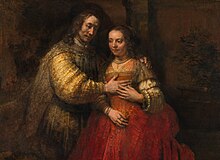
A much quieter type of Baroque emerged in the
During the 18th century,
The Rococo style spread with French artists and engraved publications. It was readily received in the Catholic parts of Germany,
The French masters
William Hogarth helped develop a theoretical foundation for Rococo beauty. Though not intentionally referencing the movement, he argued in his Analysis of Beauty (1753) that the undulating lines and S-curves prominent in Rococo were the basis for grace and beauty in art or nature (unlike the straight line or the circle in Classicism). The beginning of the end for Rococo came in the early 1760s as figures like Voltaire and Jacques-François Blondel began to voice their criticism of the superficiality and degeneracy of the art. Blondel decried the "ridiculous jumble of shells, dragons, reeds, palm-trees and plants" in contemporary interiors.[26]
By 1785, Rococo had passed out of fashion in France, replaced by the order and seriousness of Neoclassical artists such as Jacques-Louis David, whose imposing history paintings depicting both historical and contemporary events embodied the ideals of the French Revolution.
19th century
-
Jacques-Louis David, 1787
-
John Singleton Copley, 1778
-
Antoine-Jean Gros, 1804
-
John Constable, 1802
-
Francisco Goya, 1814
-
Théodore Géricault, 1819
-
Caspar David Friedrich, c. 1822
-
Karl Brullov, 1827
-
Eugène Delacroix, 1830
-
J. M. W. Turner, 1838
-
Ivan Aivazovsky, 1850
-
Gustave Courbet, 1849–1850
-
Albert Bierstadt, 1866
-
Camille Corot, c. 1867
-
Camille Pissarro 1872
-
Claude Monet, 1872
-
Pierre-Auguste Renoir, 1876
-
Edgar Degas, 1876
-
Édouard Manet, 1882
-
Mary Cassatt, 1893–1894
-
Valentin Serov, 1887
-
Vincent van Gogh, 1888
-
Arnold Böcklin, 1883
-
Ilya Repin, 1891
-
Paul Gauguin, 1897–1898
-
Georges-Pierre Seurat, 1884–1886
-
Thomas Eakins, 1884–1885
-
Albert Pinkham Ryder, 1890
-
Winslow Homer, 1899
-
Ferdinand Hodler, 1906
-
Paul Cézanne, 1906
After
By the mid-19th century, painters became liberated from the demands of their patronage to only depict scenes from religion, mythology, portraiture or history. Art became more purely a means of personal expression in the work of painters like
into a major genre, considered until then as a minor genre or as a decorative background for figure compositions. Some of the major painters of this period are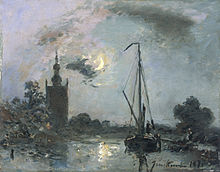
A major force in the turn towards
In the latter third of the century Impressionists such as Édouard Manet, Claude Monet, Pierre-Auguste Renoir, Camille Pissarro, Alfred Sisley, Berthe Morisot, Mary Cassatt, and Edgar Degas worked in a more direct approach than had previously been exhibited publicly. They eschewed allegory and narrative in favor of individualized responses to the modern world, sometimes painted with little or no preparatory study, relying on deftness of drawing and a highly chromatic palette. Monet, Pissarro, and Sisley used the landscape as their primary motif, the transience of light and weather playing a major role in their work. Following a practice that had become increasingly popular by mid-century, they often ventured into the countryside together to paint in the open air, but not for the traditional purpose of making sketches to be developed into carefully finished works in the studio.[28] By painting in sunlight directly from nature, and making bold use of the vivid synthetic pigments that had become available since the beginning of the century, they developed a lighter and brighter manner of painting.
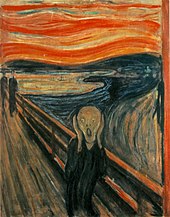
Manet, Degas, Renoir, Morisot, and Cassatt concentrated primarily on the human subject. Both Manet and Degas reinterpreted classical figurative canons within contemporary situations; in Manet's case the re-imaginings met with hostile public reception. Renoir, Morisot, and Cassatt turned to domestic life for inspiration, with Renoir focusing on the female nude. While Sisley most closely adhered to the original principals of the Impressionist perception of the landscape, Monet sought challenges in increasingly chromatic and changeable conditions, culminating in his series of monumental works of
The spell of Impressionism was felt throughout the world, including in the United States, where it became integral to the painting of
In the late 19th century there also were several, rather dissimilar, groups of
Symbolist painters mined
20th century
-
Henri Matisse, 1905, Fauvism
-
Henri Rousseau, 1905, the reason for the term Fauvism] and the original "Wild Beast"
-
Henri Matisse, 1909, late Fauvism
-
Pablo Picasso, 1907, early Cubism
-
Analytic Cubism
-
Juan Gris, 1912, Cubism
-
Giorgio de Chirico, 1914, pre-Surrealism
The heritage of painters like
The Salon d'Automne of 1905 brought notoriety and attention to the works of Henri Matisse and Fauvism. The group gained their name after critic Louis Vauxcelles described their work with the phrase "Donatello chez les fauves" ("Donatello among the wild beasts"),[32] contrasting the paintings with a Renaissance-type sculpture that shared the room with them.[33] The jungle scene The Hungry Lion Throws Itself on the Antelope by Henri Rousseau (who was not a Fauve) hung near the works by Matisse and may have inspired the sarcastic term used in the press.[34] Vauxcelles' comment was printed on 17 October 1905 in the daily newspaper Gil Blas, and passed into popular usage.[33][35]
In the first two decades of the 20th century and after cubism, several other important movements emerged;
Fauvism, Der Blaue Reiter, Die Brücke
-
The Green Stripe, Fauvism, 1905
-
André Derain, Fauvism, 1906
-
Maurice de Vlaminck, Fauvism, 1906
Fauvism had no concrete theories, and was short lived, beginning in 1905 and ending in 1907. They had only three exhibitions. Matisse was seen as the leader of the movement, due to his seniority in age and prior self-establishment in the academic art world. His 1905 portrait of Mme. Matisse,
By 1907 Fauvism no longer was a shocking new movement, and Appolinaire said of Matisse in an article published in La Falange, "We are not here in the presence of an extravagant or an extremist undertaking: Matisse's art is eminently reasonable."[37]
Expressionism, Symbolism, American Modernism, Bauhaus
-
Gustav Klimt, Expressionism, 1907–1908
-
Arthur Dove, early American modernism, 1911
-
Pierre Bonnard, 1913, European modernist Narrative painting
-
Stuart Davis, American modernism, 1921
-
Patrick Henry Bruce, American modernism, 1929–1930
Expressionism and Symbolism are broad rubrics that involve several related movements in 20th-century painting that dominated much of the avant-garde art being made in Western, Eastern and Northern Europe. Expressionist works were painted largely between World War I and World War II, mostly in France, Germany, Norway, Russia, Belgium, and Austria. Fauvism, Die Brücke, and Der Blaue Reiter are three of the best known groups of Expressionist and Symbolist painters. Marc Chagall's painting I and the Village tells an autobiographical story that examines the relationship between the artist and his origins, with a lexicon of artistic Symbolism. Gustav Klimt, Egon Schiele, Edvard Munch, Emil Nolde, Chaïm Soutine, James Ensor, Oskar Kokoschka, Ernst Ludwig Kirchner, Max Beckmann, Franz Marc, Georges Rouault, Amedeo Modigliani, and some Americans abroad such as Marsden Hartley and Stuart Davis, were considered influential expressionist painters. Although Alberto Giacometti is primarily thought of as a Surrealist sculptor, he made intense expressionist paintings as well.
American painters during the period between World War I and World War II tended to go to Europe for recognition.
Pioneers of abstraction
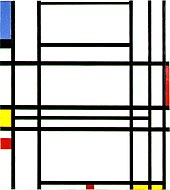
-
Piet Mondrian, 1911, early De Stijl
-
Abstract Art
Dada and Surrealism
-
Francis Picabia, 1916, Dada
-
Max Ernst, 1921), Surrealism
-
André Masson, 1922, early Surrealism
-
Kurt Schwitters, 1919, painted collage, Dada
-
Hannah Höch, collage, 1919, Dada
-
Max Ernst, 1920, early Surrealism
-
Joan Miró, Horse, Pipe and Red Flower, 1920, early Surrealism

In 1924
Max Ernst, whose 1920 painting Murdering Airplane is seen here, studied philosophy and psychology in Bonn and was interested in the alternative realities experienced by the insane. His paintings may have been inspired by the
Throughout the 1930s, Surrealism continued to become more visible to the public at large. A Surrealist group developed in Britain and, according to Breton, their 1936 London International Surrealist Exhibition was a high-water mark of the period and became the model for international exhibitions. Surrealist groups in Japan, and especially in Latin America, the Caribbean and in Mexico produced innovative and original works. Other prominent surrealist artists include Giorgio de Chirico, Méret Oppenheim, Toyen, Grégoire Michonze, Roberto Matta, Kay Sage, Leonora Carrington, Dorothea Tanning, and Leonor Fini.
Neue Sachlichkeit, Social realism, regionalism, American Scene painting, Symbolism
-
Neue Sachlichkeit
-
Regionalism
-
American realism
-
Pop Art)
-
Charles Demuth, 1931, Precisionism
-
Social Realism.
-
Man, Controller of the Universe), originally created in 1934
-
American Scene painting
During the 1920s and the 1930s and the
In Germany
During the 1930s radical leftist politics characterized many of the artists connected to Surrealism, including
Guernica is an immense black-and-white, 3.5-metre (11 ft) tall and 7.8-metre (23 ft) wide mural painted in oil. The mural presents a scene of death, violence, brutality, suffering, and helplessness without portraying their immediate causes. The choice to paint in black and white invokes the immediacy of a newspaper photograph.[48] The painting was first exhibited in Paris in 1937, then Scandinavia and London, and in 1939 at Picasso's request the painting was sent to the United States in an extended loan (for safekeeping) at
From the
A renaissance of the arts in Latin America included the
Frida Kahlo's works relate to Surrealism and to the
Abstract expressionism
The 1940s in New York City heralded the triumph of American
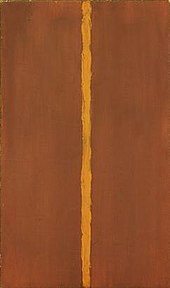
Post-Second World War American painting called Abstract expressionism included artists like
Abstract expressionism,Technically Surrealism was an important predecessor for Abstract expressionism with its emphasis on spontaneous, automatic or subconscious creation. Jackson Pollock's dripping paint onto a canvas laid on the floor is a technique that has its roots in the work of André Masson. Another important early manifestation of what came to be abstract expressionism is the work of American Northwest artist Mark Tobey, especially his "white writing" canvases, which, though generally not large in scale, anticipate the "all over" look of Pollock's drip paintings.
Additionally, Abstract expressionism has an image of being rebellious, anarchic, highly idiosyncratic and, some feel, rather nihilistic. In practice, the term is applied to any number of artists working (mostly) in New York who had quite different styles, and even applied to work which is not especially abstract nor expressionist. Pollock's energetic "
Clyfford Still, Barnett Newman, Adolph Gottlieb, and the serenely shimmering blocks of color in Mark Rothko's work (which is not what would usually be called expressionist and which Rothko denied was abstract), are classified as abstract expressionists, albeit from what Clement Greenberg termed the Color field direction of abstract expressionism. Both Hans Hofmann and Robert Motherwell can be described as practitioners of action painting and Color field painting.
During the 1950s Color Field painting initially referred to a particular type of abstract expressionism, especially the work of Mark Rothko, Clyfford Still, Barnett Newman, Robert Motherwell and Adolph Gottlieb. It essentially involved abstract paintings with large, flat expanses of color that expressed the sensual, and visual feelings and properties of large areas of nuanced surface. Art critic Clement Greenberg perceived Color Field painting as related to but different from Action painting. The overall expanse and gestalt of the work of the early color field painters speaks of an almost religious experience, awestruck in the face of an expanding universe of sensuality, color and surface. During the early-to-mid-1960s Color Field painting came to refer to the styles of artists like Jules Olitski, Kenneth Noland, and Helen Frankenthaler, whose works were related to second-generation abstract expressionism, and to younger artists like Larry Zox, and Frank Stella – all moving in a new direction.
Realism, Landscape, Seascape, Figuration, Still-Life, Cityscape
-
American realism
-
Nighthawks, 1942, Cityscape
During the 1930s through the 1960s as abstract painting in America and Europe evolved into movements such as
In Italy during this time, Giorgio Morandi was the foremost still-life painter, exploring a wide variety of approaches to depicting everyday bottles and kitchen implements.[55]
Arshile Gorky's portrait of Willem de Kooning is an example of the evolution of abstract expressionism from the context of figure painting, cubism and surrealism. Along with his friends de Kooning and John D. Graham Gorky created bio-morphically shaped and abstracted figurative compositions that by the 1940s evolved into totally abstract paintings. Gorky's work seems to be a careful analysis of memory, emotion and shape, using line and color to express feeling and nature.[56][57]
Study after Velázquez's Portrait of Pope Innocent X, 1953 is a painting by the Irish-born artist Francis Bacon and is an example of Post World War II European Expressionism. The work shows a distorted version of the Portrait of Innocent X painted by the Spanish artist Diego Velázquez in 1650. The work is one of a series of variants of the Velázquez painting which Bacon executed throughout the 1950s and early 1960s, over a total of forty-five works.[58] When asked why he was compelled to revisit the subject so often, Bacon replied that he had nothing against the Popes, that he merely "wanted an excuse to use these colours, and you can't give ordinary clothes that purple colour without getting into a sort of false fauve manner."[59] The Pope in this version seethes with anger and aggression, and the dark colors give the image a grotesque and nightmarish appearance.[60] The pleated curtains of the backdrop are rendered transparent, and seem to fall through the Pope's face.[61]
The figurative work of Francis Bacon, Frida Kahlo, Edward Hopper, Lucian Freud, Andrew Wyeth and others served as a kind of alternative to abstract expressionism.
After World War II the term
Pop art
In New York City during the mid-1950s, Rauschenberg and Johns created works of art that at first seemed to be continuations of
Pop art is exemplified by the artists
Earlier in England in 1956 the term Pop Art was used by Lawrence Alloway for paintings that celebrated consumerism of the post World War II era. This movement rejected Abstract expressionism and its focus on the hermeneutic and psychological interior, in favor of art which depicted material consumer culture, advertising, and iconography of the mass production age.[67] The early works of English artist David Hockney, such as A Bigger Splash, and the works of Richard Hamilton, Peter Blake, and Eduardo Paolozzi, are considered seminal examples in the movement. In New York's
Art Brut, New Realism, Bay Area Figurative Movement, Neo-Dada, Photorealism
During the 1950s and 1960s as abstract painting in America and Europe evolved into movements such as
Also during the 1960s and 1970s, there was a reaction against painting. Critics like Douglas Crimp viewed the work of artists like
Neo-Dada is also a movement that started in the 1950s and 1960s and was related to Abstract expressionism only with imagery. This trend, in which manufactured items are combined with artist materials, is exemplified by the work of Jasper Johns and Robert Rauschenberg. Rauschenberg's "combines" in the 1950s were forerunners of Pop Art and Installation art, and made use of the assemblage of large physical objects, including stuffed animals, birds and commercial photography. Rauschenberg, Johns, Larry Rivers, John Chamberlain, Claes Oldenburg, George Segal, Jim Dine, and Edward Kienholz among others created new conventions of art-making; they made acceptable in serious contemporary art circles the radical inclusion of unlikely materials as parts of their works of art.[71][72]
Geometric abstraction, Op Art, Hard-Edge, Color field, Minimal Art, New Realism
-
New Realism
During the 1960s and 1970s abstract painting continued to develop in America through varied styles.
Josef Albers, Hans Hofmann,
Shaped canvas, Washington Color School, Abstract Illusionism, Lyrical Abstraction
Color Field painting pointed toward a new direction in American painting, away from
From 1960 Frank Stella produced paintings in aluminum and copper paint and his first works using shaped canvases (canvases in a shape other than the traditional rectangle or square), often being in L, N, U or T-shapes. These later developed into more elaborate designs, in the Irregular Polygon series (1967), for example. Later he began his Protractor Series (1971) of paintings, in which arcs, sometimes overlapping, within square borders are arranged side by side to produce full and half circles painted in rings of concentric color. Harran II, 1967, is an example of the Protractor Series.
The Andre Emmerich Gallery, the
Lyrical Abstraction (the term being coined by Larry Aldrich, the founder of the
Abstract Illusionism, Monochrome, Minimalism, Postminimalism

One of the first artists specifically associated with Minimalism was
Artists such as
Because of a tendency in Minimalism to exclude the pictorial, illusionistic and fictive in favor of the literal—as demonstrated by Robert Mangold, who understood the concept of the shape of the canvas and its relationship to objecthood—there was a movement away from painterly and toward sculptural concerns. Donald Judd had started as a painter, and ended as a creator of objects. His seminal essay, "Specific Objects" (published in Arts Yearbook 8, 1965), was a touchstone of theory for the formation of Minimalist aesthetics. In this essay, Judd found a starting point for a new territory for American art, and a simultaneous rejection of residual inherited European artistic values. He pointed to evidence of this development in the works of an array of artists active in New York at the time, including Jasper Johns, Dan Flavin and Lee Bontecou. Of "preliminary" importance for Judd was the work of George Earl Ortman [2], who had concretized and distilled painting's forms into blunt, tough, philosophically charged geometries. These Specific Objects inhabited a space not then comfortably classifiable as either painting or sculpture. That the categorical identity of such objects was itself in question, and that they avoided easy association with well-worn and over-familiar conventions, was a part of their value for Judd.
In a much more general sense, one might find European roots of Minimalism in the geometric abstractions painters in the Bauhaus, in the works of Piet Mondrian and other artists associated with the movement DeStijl, in Russian Constructivists and in the work of the Romanian sculptor Constantin Brâncuși. American painters such as Brice Marden and Cy Twombly show a clear European influence in their pure abstraction, minimalist painting of the 1960s. Ronald Davis polyurethane works from the late 1960s pay homage to the Broken Glass of Marcel Duchamp. This movement was heavily criticised by high modernist formalist art critics and historians. Some anxious critics thought Minimalist art represented a misunderstanding of the modern dialectic of painting and sculpture as defined by critic
During the 1960s and 1970s artists as powerful and influential as
Still other important innovations in abstract painting took place during the 1960s and the 1970s characterized by
Neo-expressionism
In the late 1960s the abstract expressionist painter Philip Guston helped to lead a transition from abstract expressionism to Neo-expressionism in painting, abandoning the so-called "pure abstraction" of abstract expressionism in favor of more cartoonish renderings of various personal symbols and objects. These works were inspirational to a new generation of painters interested in a revival of expressive imagery.[84] His painting Painting, Smoking, Eating is an example of Guston's return to representation.
In the late 1970s and early 1980s, there was also a return to painting that occurred almost simultaneously in Italy, Germany, France and
Neo-expressionism was a style of modern painting that became popular in the late 1970s and dominated the art market until the mid-1980s. It developed in Europe as a reaction against the conceptual and minimalistic art of the 1960s and 1970s. Neo-expressionists returned to portraying recognizable objects, such as the human body (although sometimes in a virtually abstract manner) in a rough and violently emotional way using vivid colors and banal color harmonies. The veteran painters Philip Guston, Frank Auerbach, Leon Kossoff, Gerhard Richter, A. R. Penck and Georg Baselitz, along with the slightly younger artists Damien Hirst, Anselm Kiefer, the Americans Eric Fischl, Susan Rothenberg, David Salle, Jean-Michel Basquiat, Julian Schnabel, and Keith Haring, the Italians Francesco Clemente, Mimmo Paladino, Sandro Chia, and Enzo Cucchi, and many others became known for working in this intense expressionist vein of painting. Critical reaction was divided. Some critics regarded it as driven by profit motivations by large commercial galleries.[84]
Anselm Kiefer is a leading figure in European Neo-expressionism.[86] By the 1980s, Kiefer's themes widened from a focus on Germany's role in civilization to the fate of art and culture in general. His work became more sculptural and involves not only national identity and collective memory, but also occult symbolism, theology and mysticism.[87] The theme of all the work is the trauma experienced by entire societies, and the continual rebirth and renewal in life.
Painting still holds a respected position in contemporary art. Art is an open field no longer divided by the objective versus non-objective dichotomy. Artists can achieve critical success whether their images are representational or abstract. What has currency is content, exploring the boundaries of the medium, and a refusal to recapitulate the works of the past as an end goal.[88][89][90]
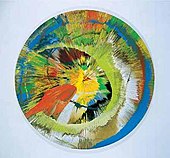
Contemporary Painting
Throughout the 20th century and into the 21st century, with the advent of
Mainstream painting has been rejected by artists of the postmodern era in favor of artistic pluralism.[93] According to art critic Arthur Danto there is an anything goes attitude that prevails; an "everything going on", and consequently "nothing going on" syndrome; this creates an aesthetic traffic jam with no firm and clear direction and with every lane on the artistic superhighway filled to capacity.[94]
See also
- Art periods
- Hierarchy of genres
- History of art
- History painting
- List of painters
- Lives of the Most Excellent Painters, Sculptors, and Architects
- Self portrait
- Timeline of Italian artists to 1800
- Visual arts of Australia
- Visual arts of the United States
- Gothic book illustration
References
- ^ Cole, Bruce Art of the Western World: From Ancient Greece to Post Modernism. Simon and Schuster, 1981, Simonsays.com Archived 7 April 2020 at the Wayback Machine accessed 27 October 2007
- ^ "Explaining Modernism W. Stephen Croddy, retrieved 11 November 2008". Bu.edu. 25 October 1962. Retrieved 8 August 2014.
- ^ Discussion of the role of patrons in the Renaissance, retrieved 11 November 2008
- ^ History 1450–1789: Artistic Patronage Archived 1 April 2019 at the Wayback Machine, retrieved 11 November 2008
- ^ Britannica.com Archived 7 August 2008 at the Wayback Machine, retrieved 11 November 2008
- ^ Victorianweb.org Archived 3 December 2008 at the Wayback Machine, Aesthetes, Decadents, and the Idea of Art for Art's Sake; George P. Landow, Professor of English and the History of Art, Brown University, retrieved 11 November 2008
- ^ National Gallery of Art, retrieved 11 November 2008 Archived 6 November 2007 at the Wayback Machine
- ^ "Cézanne to Picasso: Ambroise Vollard, Patron of the Avant-Garde, Chicago Art Institute, retrieved 11 November 2008". Artic.edu. Archived from the original on 12 October 2008. Retrieved 8 August 2014.
- ISBN 0-471-29198-6
- ^ Cole, Bruce & Gealt, Adelheid M. Art of the Western World: from Ancient Greece to Post-Modernism Archived 22 November 2022 at the Wayback Machine, retrieved 11 November 2008
- ISBN 978-0-415-72078-6, p. 153.
- ^ Honour & Fleming, 53
- ^ Castleden, 4
- ^ Hood, 56
- ^ Hood, 18
- ^ Hood, 17–18, 23–24
- ^ Hood, 240–241
- ^ "Roman Painting". art-and-archaeology.com.
- ^ "Roman Wall Painting". accd.edu. Archived from the original on 19 March 2007.
- ^ Putnam A.M., Geo. Haven. Books and Their Makers During The Middle Ages. Vol. 1. New York: Hillary House, 1962. Print.
- ^ a b c Gardner, H., Kleiner, F. S., & Mamiya, C. J. (2006). Gardner's art through the ages: the Western perspective. Belmont, CA, Thomson Wadsworth: 430–437
- Encyclopædia Britannica Online, latest edition, full-article.
- The Columbia Encyclopedia, Sixth Edition. 2001–05.
- ^ Helen Gardner, Fred S. Kleiner, and Christin J. Mamiya, "Gardner's Art Through the Ages" (Belmont, CA: Thomson/Wadsworth, 2005)
- ISBN 0-8014-9218-1
- ^ "Uni-Heidelberg.de". Archived from the original on 17 March 2020. Retrieved 5 February 2009.
- ^ "Novack, Barbara American Sublime Artforum, 2002, retrieved 30 October 2008". Findarticles.com. Retrieved 8 August 2014.
- ISBN 0-300-05035-6.
- ISBN 2-221-50161-6
- Greenwood Press, 1996. Page 114.
- ^ a b "Christopher Green, 2009, Cubism, MoMA, Grove Art Online, Oxford University Press". Moma.org. Retrieved 8 August 2014.
- ISSN 1149-9397
- ^ a b Chilver, Ian (Ed.). "Fauvism" Archived 9 November 2011 at the Wayback Machine, The Oxford Dictionary of Art, Oxford University Press, 2004. 26 December 2007.
- ^ Smith, Roberta. "Henri Rousseau: In imaginary jungles, a terrible beauty lurks Archived 12 June 2022 at the Wayback Machine". The New York Times, 14 July 2006. Retrieved on 29 December 2007.
- ^ Elderfield, 43
- ISBN 0-87070-638-1
- ISBN 0-87070-676-4p. 348.
- ^ "The Artists' Association 'Brücke'" Archived 11 May 2012 at the Wayback Machine, Brücke Museum. Retrieved 7 September 2007.
- ^ Der Blaue Reiter, Tate Glossary Archived 2 August 2011 at the Wayback Machine retrieved 10 August 2009
- ^ Agee and Rose, 1979, p. 8.
- ^ "New Yorker article, accessed online 11 November 2008". Newyorker.com. 6 August 2007. Retrieved 8 August 2014.
- ^ Wayne Craven, American Art: History and Culture, p. 464.
- ^ Jasonkaufman.com Archived 17 October 2008 at the Wayback Machine, accessed online 28 August 2007
- ^ "National Gallery of Art, retrieved 11 November 2008". Nga.gov. Retrieved 8 August 2014.
- ^ Spector, Nancy. "The Tilled Field, 1923–1924 Archived 25 September 2008 at the Wayback Machine". Guggenheim display caption. Retrieved 30 May 2008.
- ^ "From the Tate Modern". Tate.org.uk. Retrieved 8 August 2014.
- ^ Lewis, Helena. Dada Turns Red. 1990. Edinburgh University Press. A history of the uneasy relations between Surrealists and Communists from the 1920s through the 1950s.
- ISBN 0857732811.
- ^ Fineman, Mia, The Most Famous Farm Couple in the World: Why American Gothic still fascinates. Archived 7 September 2011 at the Wayback Machine, Slate, 8 June 2005
- ^ Herrera, Hayden. "Frida Kahlo". Oxford Art Online. Oxford University Press
- ^ "Abstract Expressionism, NY, MoMA". Archived from the original on 18 June 2018. Retrieved 20 April 2018.
- ISBN 978-0807066812
- ^ "Post Painterly Abstraction". www.sharecom.ca. Retrieved 8 April 2018.
- ^ NGA.gov.au Archived 21 December 2016 at the Wayback Machine, National Gallery of Australia
- ^ David Piper, p. 635
- ISBN 9780876332139
- ISBN 9781588106445
- ISBN 3-7913-1664-8, p. 17
- ISBN 0-8133-3520-5(1996), p. 147
- ^ Schmied (1996), p. 20
- ^ Peppiatt (1996), p. 148
- ^ Christina's World Archived 17 September 2006 at the Wayback Machine in the MoMA Online Collection
- ^ Glueck, Grace (7 January 2005). "NY Times, Grace Glueck, Art in Review; Milton Avery – Onrushing Waves". The New York Times. Retrieved 8 August 2014.
- ^ Hilton Kramer (13 May 2002). "Hilton Kramer, NY Observer, Summer of 57 with Avery, Gottlieb, Rothko". Observer.com. Retrieved 8 August 2014.
- ^ Hendrickson 1988, p. 31
- ^ Kimmelman, Michael (30 September 1997). "Roy Lichtenstein, Pop Master, Dies at 73". The New York Times. Retrieved 12 November 2007.
- ISBN 0-393-04401-7
- ^ Jean Dubuffet: L’Art brut préféré aux arts culturels [1949] (in English) Art brut. Madness and Marginalia, special issue of Art & Text, No. 27, 1987, pp. 31–33)
- ^ Douglas Crimp, The End of Painting, October, Vol. 16, Spring, 1981, pp. 69–86
- ^ Douglas Crimp, On the Museum's Ruins, Cambridge, Mass., 1993
- ^ Catherine Craft, An Audience of Artists: Dada, Neo-Dada, and the Emergence of Abstract Expressionism, University of Chicago, 2012
- ^ Susan Hapgood, Neo-Dada: Redefining Art, 1958–62, Universe Books and American Federation of Arts, 1994
- ^ Terry Fenton, online essay about Kenneth Noland, and acrylic paint, Sharecom.ca Archived 21 January 2021 at the Wayback Machine, accessed 30 April 2007
- ^ Curtis, Cathy (22 January 1988). "Wilshire Center". Los Angeles Times.
- ^ "SBMA: Exhibitions > current > Colorscope: Abstract Painting 1960-1979". Archived from the original on 3 July 2010. Retrieved 2 June 2010.
- ^ Aldrich, Larry. Young Lyrical Painters, Art in America, v.57, n6, November–December 1969, pp. 104–113.
- ^ Lyrical Abstraction, Exhibition Catalogue, the Aldrich Museum of Contemporary Art, Ridgefield, Connecticut 1970.
- ^ The Aldrich Museum of Contemporary Art, Lyrical Abstraction, exhibition: 5 April through 7 June 1970
- ^ Lyrical Abstraction Whitney Museum of American Art, New York, 25 May – 6 July 1971
- ^ a b Movers and Shakers, New York, "Leaving C&M", by Sarah Douglas, Art and Auction, March 2007, V.XXXNo7.
- ^ Martin, Ann Ray, and Howard Junker. The New Art: It's Way, Way Out, Newsweek 29 July 1968: pp. 3, 55–63.
- ^ Britannica.com Archived 14 May 2009 at the Wayback Machine, "Minimalism"
- ^ Less Is More: Ad Reinhardt's 12 Rules for Pure Art Archived 7 July 2018 at the Wayback Machine, The Editors of ARTnews, 24 January 2015 (based on a paper read at the 45th annual meeting of the College Art Association at the Detroit Institute of Art, 26 January 1957)
- ^ a b "Neo-Expressionism, The Art Story". Archived from the original on 30 April 2016. Retrieved 20 April 2018.
- ^ "Tate online glossary". Tate.org.uk. Archived from the original on 2 August 2011. Retrieved 8 August 2014.
- ^ "The Art Story, Artist Anselm Kiefer". Archived from the original on 16 April 2018. Retrieved 20 April 2018.
- ^ "Fiefer, Tate". Archived from the original on 21 April 2018. Retrieved 20 April 2018.
- ISBN 1483582590
- ISBN 0500239452
- ^ Ronald Paulson, Figure and abstraction in contemporary painting, Rutgers University Press, 1990
- ISBN 9781444396003.
- ISBN 9027234450.
- ^ "About Contemporary Art, Getty Museum". Archived from the original on 9 August 2016. Retrieved 25 February 2018.
- ISBN 0-691-00299-1. As quoted by Professor David W. Cloweny on his website. [1] Archived 27 December 2009 at the Wayback Machine
Sources
- Clement Greenberg, Art and Culture, Beacon Press, 1961
- Hendrickson, Janis (1988). Roy Lichtenstein. Cologne, Germany: Benedikt Taschen. ISBN 3-8228-0281-6.
- The Triumph of ISBN 0-15-666370-8
- Pictures of Nothing: Abstract Art since Pollock (A.W. Mellon Lectures in the Fine Arts), Kirk Varnedoe, 2003
- O'Connor, Francis V. Jackson Pollock Exhibition Catalogue, (New York, Museum of Modern Art, [1967]) OCLC 165852
- Whitney Museum of American Art, NYC, 1971.
- David Piper, The Illustrated Library of Art, Portland House, New York, 1986, ISBN 0-517-62336-6
- Agee, William C.; Rose, Barbara, 1979, Patrick Henry Bruce: American Modernist (exhibition catalogue), Houston: Museum of Fine Arts
On the effects of Gutenberg's printing
- Elizabeth L. Eisenstein, The Printing Press as an Agent of Change, ISBN 0-521-29955-1
- More recent, abridged version: Elizabeth L. Eisenstein, The Printing Revolution in Early Modern Europe, Cambridge University Press, 2Rev ed, 12 September 2005, Paperback, ISBN 0-521-60774-4
- ISBN 0-7100-1818-5.
- Briggs & Burke, A Social History of the Media: The Print Revolution in Context (2002)
External links
- History of Painting
- History of Art: From Paleolithic Age to Contemporary Art
- Robert Hughes from Artchive
- MNstate.edu Archived 28 May 2010 at the Wayback Machine, Kandinsky Concerning the Spiritual in Art, accessed online 28 May 2007


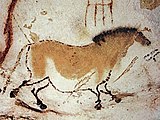











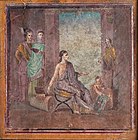
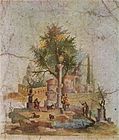







![Roman glass with a painted figure of a gladiator, found at Begram, Afghanistan (once part of the Greco-Bactrian Kingdom, then under the Kushan Empire), 52–125 AD[11]](http://upload.wikimedia.org/wikipedia/commons/thumb/d/df/Gladiateur_Begram_Guimet_18117.jpg/97px-Gladiateur_Begram_Guimet_18117.jpg)










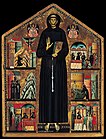


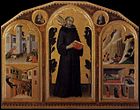




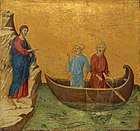




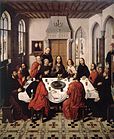



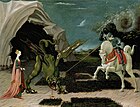





















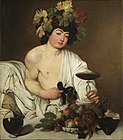
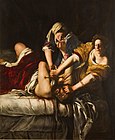
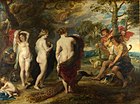
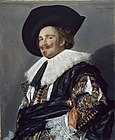



















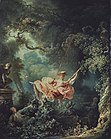
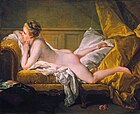

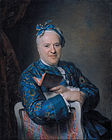

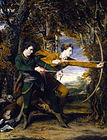

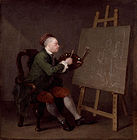
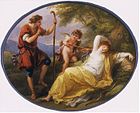

















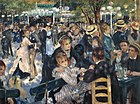
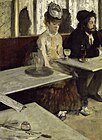



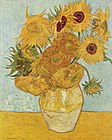









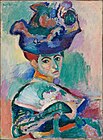
![Henri Rousseau, 1905, the reason for the term Fauvism] and the original "Wild Beast"](http://upload.wikimedia.org/wikipedia/commons/thumb/2/25/Rousseau-Hungry-Lion.jpg/140px-Rousseau-Hungry-Lion.jpg)


